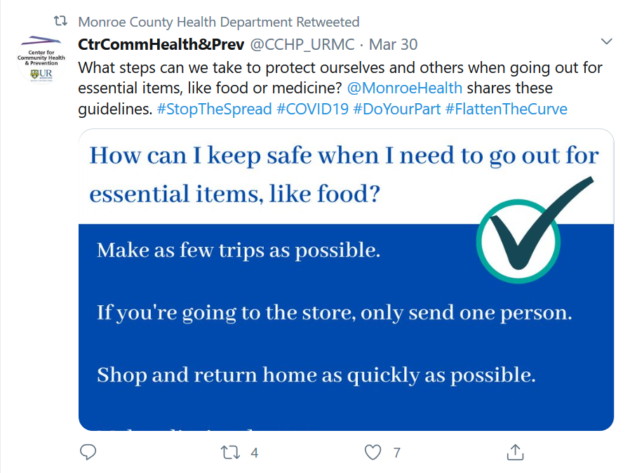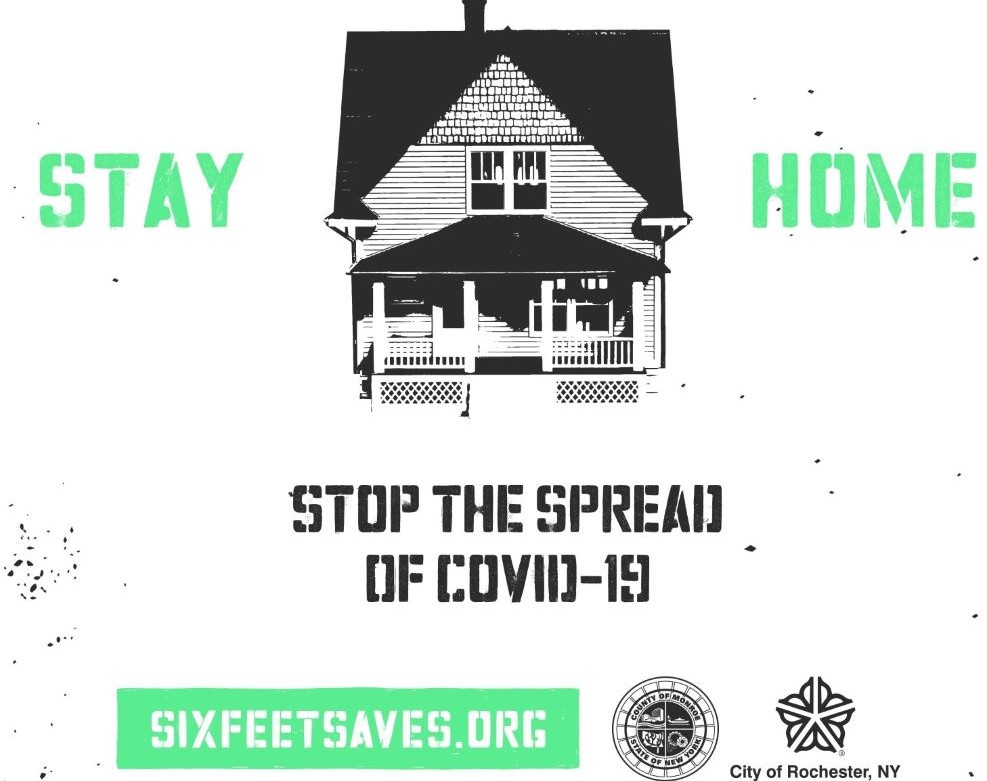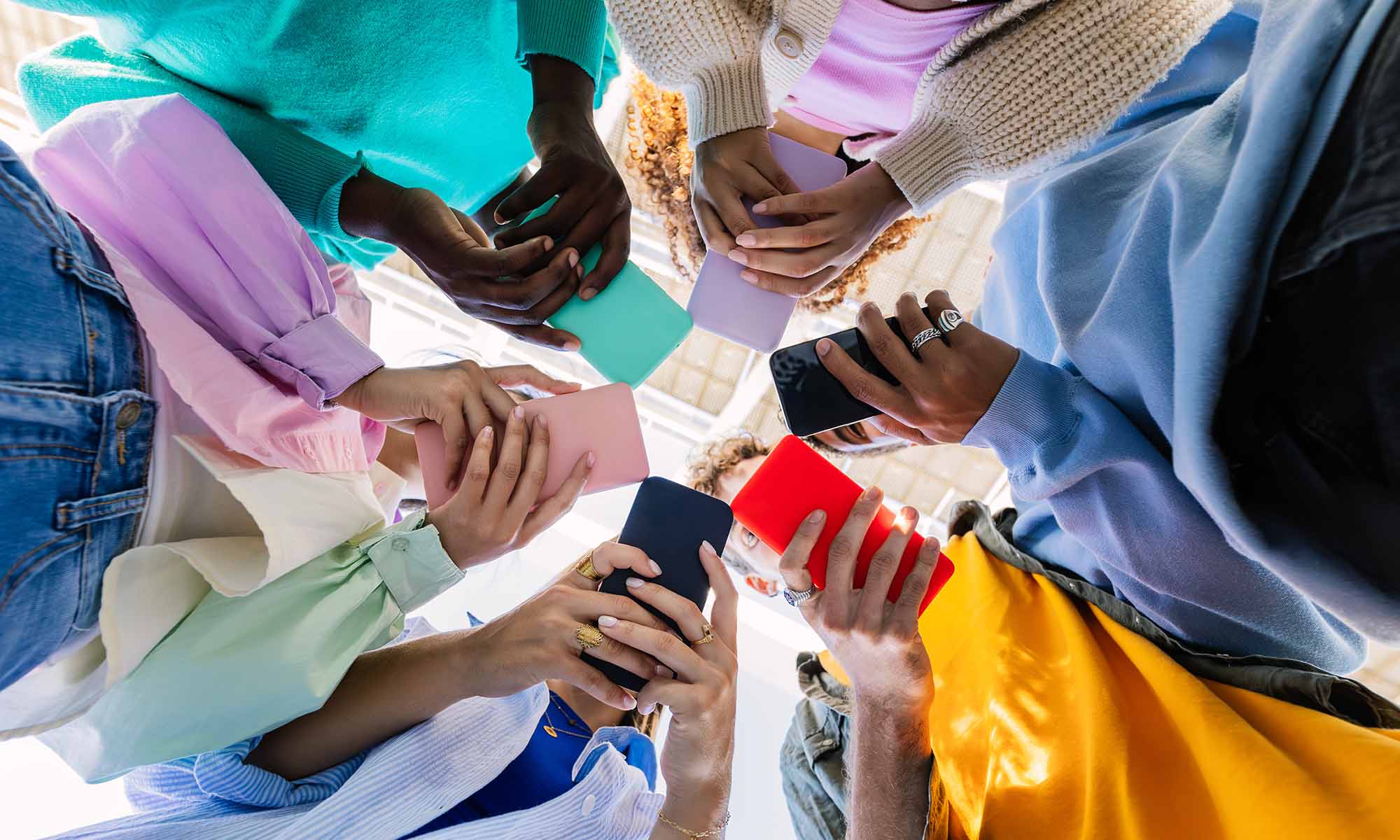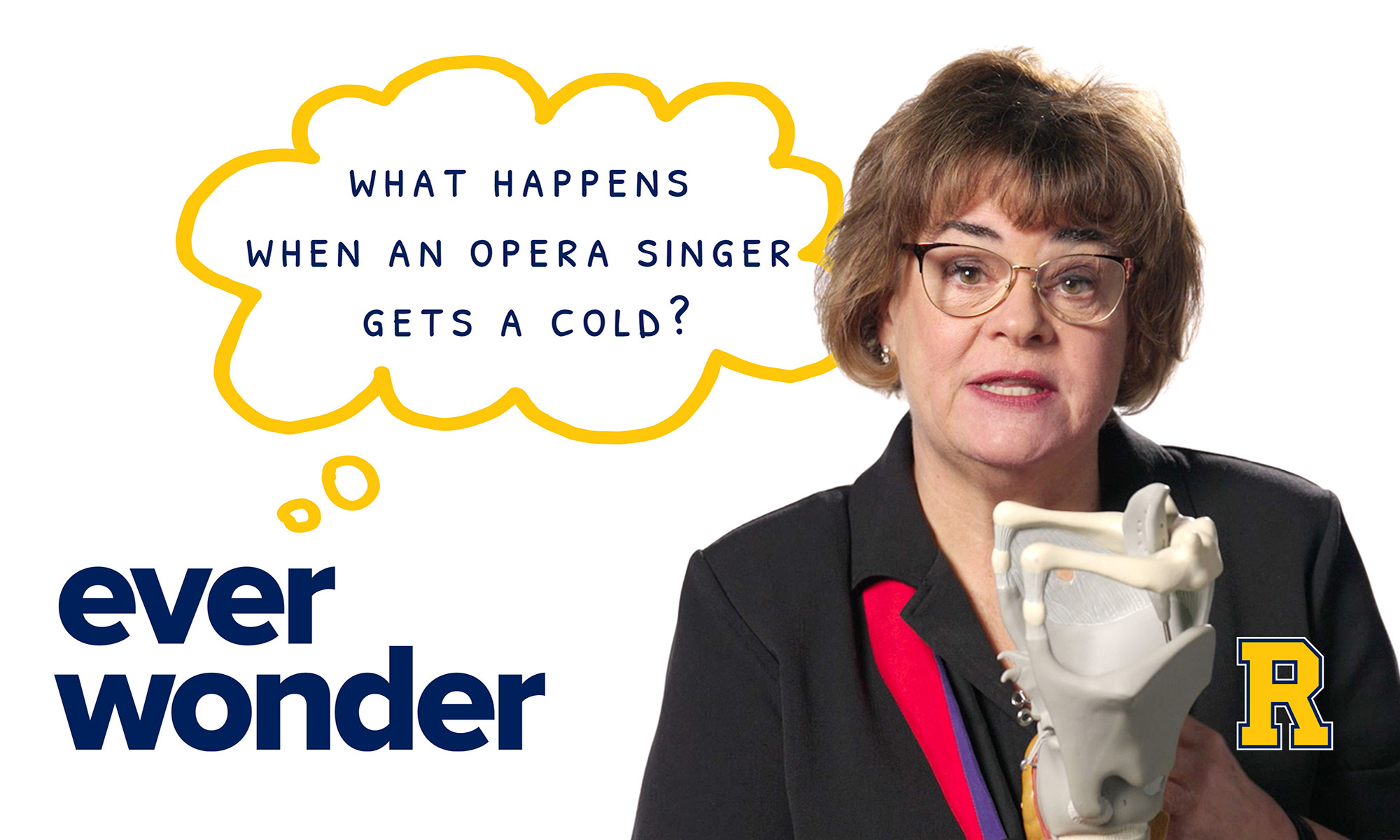Do your part, stay home, and stay six feet apart
With the onset of COVID-19, the Center for Community Health and Prevention (CCHP) and the Clinical and Translational Science Institute (CTSI) have partnered with local organizations to create an informed community-wide campaign to amplify key messages that local citizens need to know to stay healthy.
Coronavirus update
The University’s website is a way to find guidance and critical information during a rapidly changing situation.
COVID-19 symptoms or exposure?
Find out what to do if you or a close contact have symptoms or think you may have been exposed.
The team is led by the Monroe County Department of Public Health and Communications, and includes University of Rochester Medical Center and Rochester Regional Health physicians and public relations representatives; Causewave Community Partners; and the ad agency Partners & Napier. Together, the group developed key prevention messages designed to reach the broad Rochester community. A second part of the team works with the Monroe County Medical Society, URMC and RRH to convey important messages to health care providers daily.
The ad hoc group encourages everyone to share the following messages, especially on their social media channels. The messages are the basis of a broader public service campaign rolling out in the next two weeks, which will use traditional media public service announcements, and nontraditional communication tools, such as street art and yard signs. The messages will be translated into multiple languages to reach as many communities in Rochester as possible. For full information, visit the Six Feet Saves website.
Key Social Media Messaging: #SixFeetSaves #COVID19
“Do your part”
- It’s up to all of us to help protect our families, friends, and neighbors.
- It’s not easy, but staying home is the most important way you can do your part.
- If you have to go out, do your part by staying six feet away from others.
 “Stay home”
“Stay home”
Staying home is the best thing you can do to protect yourself and your family.
- Staying home means you’re helping stop the spread.
- Staying home means you could help save lives.
- The only reason not to stay home is going out for groceries, medicine, or other essentials, work at an essential job, volunteering with a nonprofit, or to see a doctor. That’s it. And always stay six feet apart.
- Having friends and family over is not OK right now—you could spread the virus to people you care about.
- Staying home and staying away from others is essential if you are sick—even if you don’t think it is COVID-19.
- So please, stay home unless you absolutely can’t.
“Stay six feet apart”
- If you have to leave your home, make sure you stay six feet away from others.
- Assume everyone has the virus, even if they don’t seem sick, and stay six feet away to avoid catching it.
- If you’re not sure how far six feet is, imagine two arm’s lengths, or about the length of a full-size bed.
FAQs
What does social distancing mean?
Social distancing is deliberately increasing the physical space between people to avoid spreading illness. Staying at least six feet away from other people lessens your chances of catching COVID-19.
Can I visit my relatives or friends?
Do not visit loved ones in person. Use the phone or other electronic devices. Deliver food or other essential items to the doorstep.
How can I keep safe when I need to go out for essential items like food?
- Make as few trips as possible.
- Shop and return home as quickly as possible.
- Make a list in advance.
- Consider using delivery services or the self-checkout lane.
- Wipe down the shopping cart, touch screens, and touch pads before and after use.
What if we are outside?
Avoid close contact with people, even when outside. Keep at least six feet apart to help slow the spread of COVID-19.
- Avoid games and activities that require close contact.
- Avoid frequently touched surfaces and objects. This includes playground equipment like slides and swings.
- Do not share equipment such as bicycles, helmets, balls, or Frisbees.
- Do not gather in groups.
- When you return indoors, wash your hands with soap and water for at least 20 seconds or use an alcohol-based hand sanitizer containing at least 60 percent alcohol.
Who should be tested and why?
For most of us, the results of a test for COVID-19 will have no impact on what happens next. We should already be staying home, practicing social distancing, and talking with our health care providers to manage any symptoms. Having a positive test result does not change this guidance. There is a limited number of tests, and they are reserved for individuals for whom test results will have an impact on what happens next. For example: a health care worker or first-responder who tests negative can return to work more quickly; a hospitalized patient who tests negative can be removed from isolation, which saves supplies; a hospitalized patient who tests positive will receive more targeted treatment.
What if I want to help?
Check in with family, friends, and neighbors by phone. If they need food or essential supplies and can’t get out, you can drop them off on their doorstep, but don’t go inside, and wash your hands when you get home.





